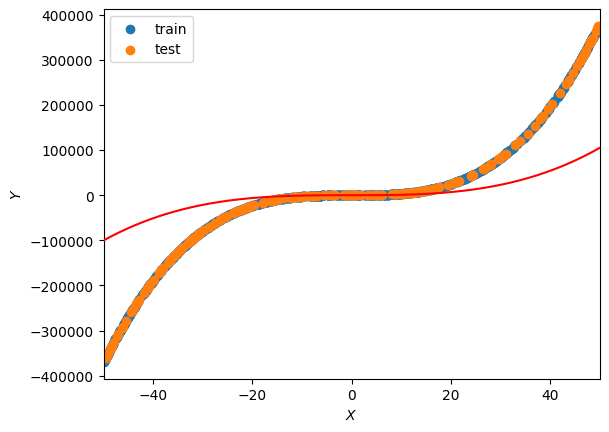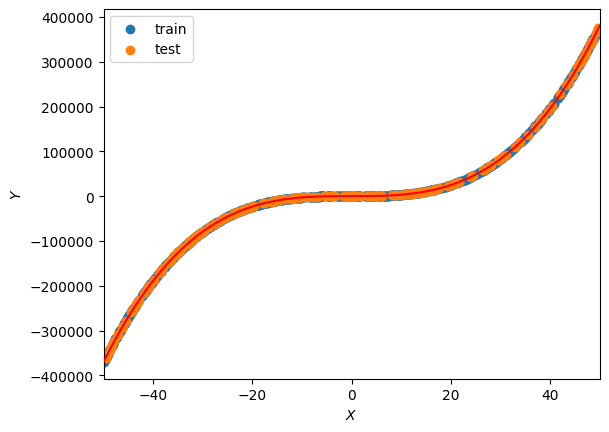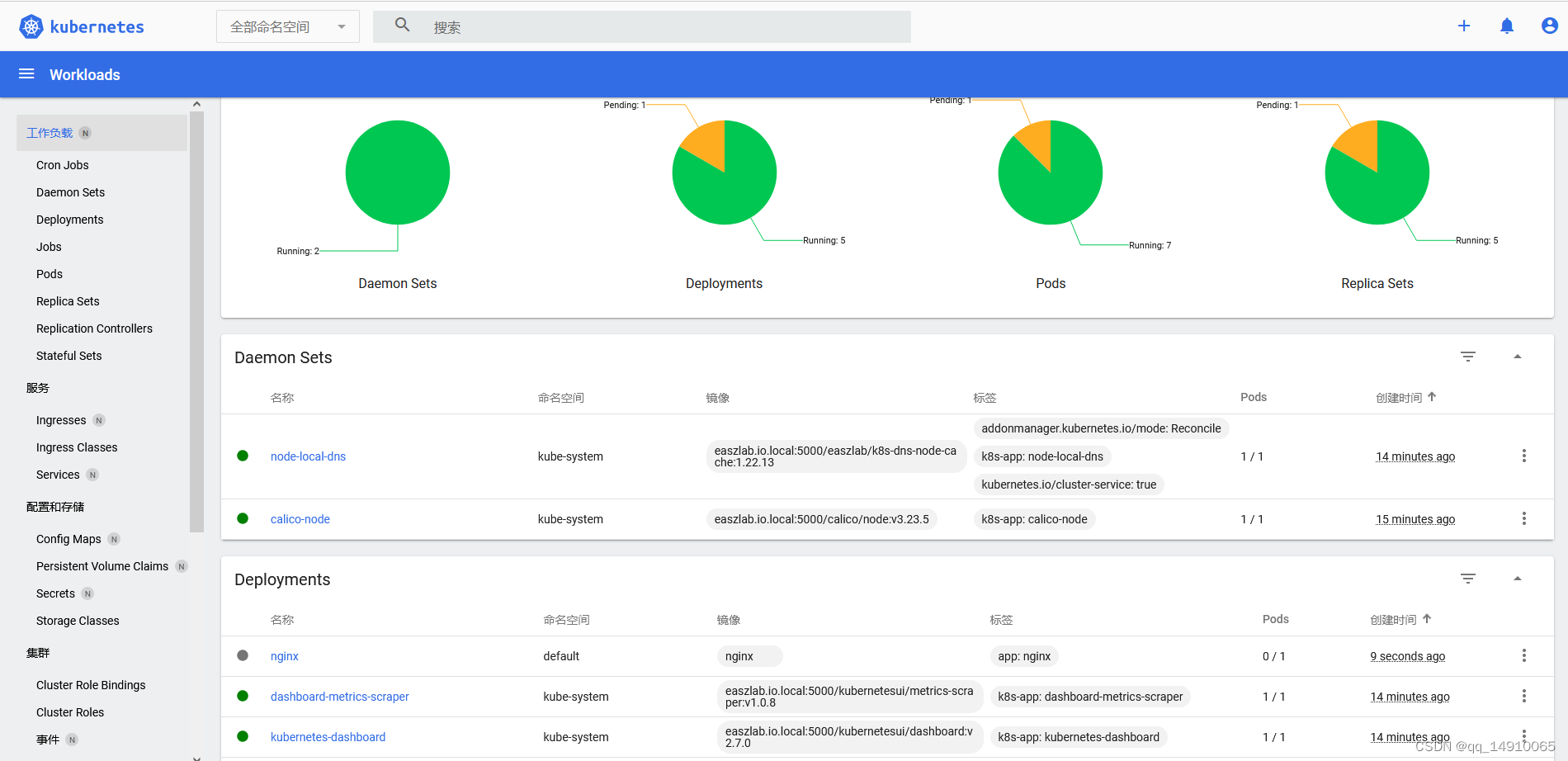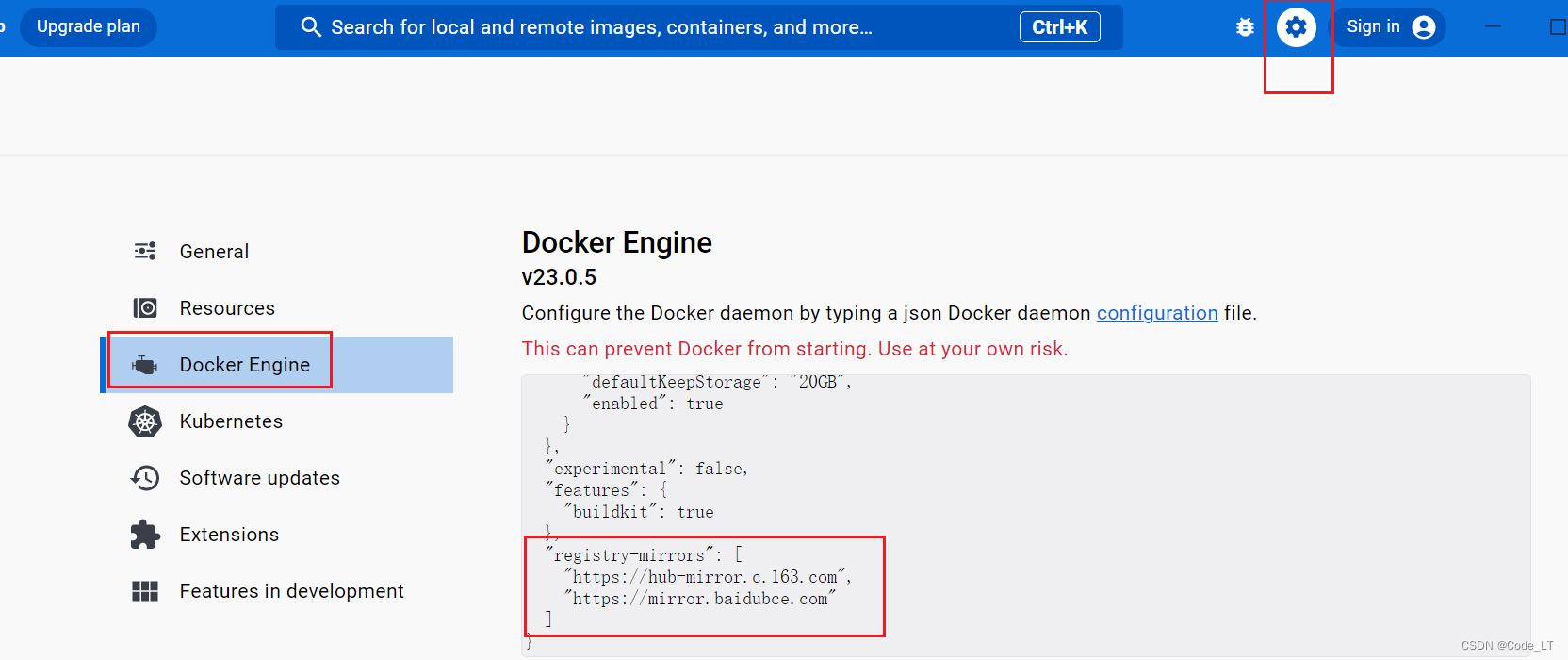一、说明
多项式回归可以识别自变量和因变量之间的非线性关系。本文是关于回归、梯度下降和 MSE 系列文章的第三篇。前面的文章介绍了简单线性回归、回归的正态方程和多元线性回归。
二、多项式回归
多项式回归用于最适合曲线拟合的复杂数据。它可以被视为多元线性回归的子集。
![]()
请注意,X₀ 是偏差的一列;这允许在第一篇文章中讨论的广义公式。使用上述等式,每个“自变量”都可以被视为 X₁ 的指数版本。
![]()
![]()
![]()
这允许从多元线性回归使用相同的模型,因为只需要识别每个变量的系数。可以创建一个简单的三阶多项式模型作为示例。其等式如下:
![]()
![]()
![]()
![]()
模型、梯度下降和 MSE 的广义函数可用于前面的文章:
# line of best fit
def model(w, X):"""Inputs:w: array of weights | (num features, 1)X: array of inputs | (n samples, num features)Output:returns the output of X@w | (n samples, 1)"""return torch.matmul(X, w)# mean squared error (MSE)
def MSE(Yhat, Y):"""Inputs:Yhat: array of predictions | (n samples, 1)Y: array of expected outputs | (n samples, 1)Output:returns the loss of the model, which is a scalar"""return torch.mean((Yhat-Y)**2) # mean((error)^2)# optimizer
def gradient_descent(w):"""Inputs:w: array of weights | (num features, 1)Global Variables / Constants:X: array of inputs | (n samples, num features)Y: array of expected outputs | (n samples, 1)lr: learning rate to scale the gradientOutput:returns the updated weights""" n = X.shape[0]return w - (lr * 2/n) * (torch.matmul(-Y.T, X) + torch.matmul(torch.matmul(w.T, X.T), X)).reshape(w.shape)三、创建数据
现在,所需要的只是一些用于训练模型的数据。可以使用“蓝图”功能,并且可以添加随机性。这遵循与前面文章相同的方法。蓝图如下所示:
![]()
可以创建大小为 (800, 4) 的训练集和大小为 (200, 4) 的测试集。请注意,除偏差外,每个特征都是第一个特征的指数版本。
import torchtorch.manual_seed(5)
torch.set_printoptions(precision=2)# features
X0 = torch.ones((1000,1))
X1 = (100*(torch.rand(1000) - 0.5)).reshape(-1,1) # generates 1000 random numbers from -50 to 50
X2, X3 = X1**2, X1**3
X = torch.hstack((X0,X1,X2,X3))# normal distribution with a mean of 0 and std of 8
normal = torch.distributions.Normal(loc=0, scale=8)# targets
Y = (3*X[:,3] + 2*X[:,2] + 1*X[:,1] + 5 + normal.sample(torch.ones(1000).shape)).reshape(-1,1)# train, test
Xtrain, Xtest = X[:800], X[800:]
Ytrain, Ytest = Y[:800], Y[800:]定义初始权重后,可以使用最佳拟合线绘制数据。
torch.manual_seed(5)
w = torch.rand(size=(4, 1))
wtensor([[0.83],[0.13],[0.91],[0.82]])import matplotlib.pyplot as pltdef plot_lbf():"""Output:prints the line of best fit in comparison to the train and test data"""# plot the train and test setsplt.scatter(Xtrain[:,1],Ytrain,label="train")plt.scatter(Xtest[:,1],Ytest,label="test")# plot the line of best fitX1_plot = torch.arange(-50, 50.1,.1).reshape(-1,1) X2_plot, X3_plot = X1_plot**2, X1_plot**3X0_plot = torch.ones(X1_plot.shape)X_plot = torch.hstack((X0_plot,X1_plot,X2_plot,X3_plot))plt.plot(X1_plot.flatten(), model(w, X_plot).flatten(), color="red", zorder=4)plt.xlim(-50, 50)plt.xlabel("$X$")plt.ylabel("$Y$")plt.legend()plt.show()plot_lbf()
四、训练模型
为了部分最小化成本函数,可以使用 5e-11 和 500,000 epoch 的学习率与梯度下降一起使用。
lr = 5e-11
epochs = 500000# update the weights 1000 times
for i in range(0, epochs):# update the weightsw = gradient_descent(w)# print the new values every 10 iterationsif (i+1) % 100000 == 0:print("epoch:", i+1)print("weights:", w)print("Train MSE:", MSE(model(w,Xtrain), Ytrain))print("Test MSE:", MSE(model(w,Xtest), Ytest))print("="*10)plot_lbf()epoch: 100000
weights: tensor([[0.83],[0.13],[2.00],[3.00]])
Train MSE: tensor(163.87)
Test MSE: tensor(162.55)
==========
epoch: 200000
weights: tensor([[0.83],[0.13],[2.00],[3.00]])
Train MSE: tensor(163.52)
Test MSE: tensor(162.22)
==========
epoch: 300000
weights: tensor([[0.83],[0.13],[2.00],[3.00]])
Train MSE: tensor(163.19)
Test MSE: tensor(161.89)
==========
epoch: 400000
weights: tensor([[0.83],[0.13],[2.00],[3.00]])
Train MSE: tensor(162.85)
Test MSE: tensor(161.57)
==========
epoch: 500000
weights: tensor([[0.83],[0.13],[2.00],[3.00]])
Train MSE: tensor(162.51)
Test MSE: tensor(161.24)
==========
即使有 500,000 个 epoch 和极小的学习率,该模型也无法识别前两个权重。虽然当前的解决方案非常准确,MSE为161.24,但可能需要数百万个epoch才能完全最小化它。这是多项式回归梯度下降的局限性之一。
五、正态方程
作为替代方案,可以使用第二篇文章中的正态方程直接计算优化权重:
def NormalEquation(X, Y):"""Inputs:X: array of input values | (n samples, num features)Y: array of expected outputs | (n samples, 1)Output:returns the optimized weights | (num features, 1)"""return torch.inverse(X.T @ X) @ X.T @ Yw = NormalEquation(Xtrain, Ytrain)
wtensor([[4.57],[0.98],[2.00],[3.00]])正态方程能够立即识别每个权重的正确值,并且每组的MSE比梯度下降时低约100点:
MSE(model(w,Xtrain), Ytrain), MSE(model(w,Xtest), Ytest)(tensor(60.64), tensor(63.84))六、结论
通过实现简单线性、多重线性和多项式回归,接下来的两篇文章将介绍套索和岭回归。这些类型的回归在机器学习中引入了两个重要概念:过拟合和正则化。
参考文章:
亨特·菲利普斯

![[详解-vector] C++必知必会 vector常用各种操作解析](/images/no-images.jpg)



